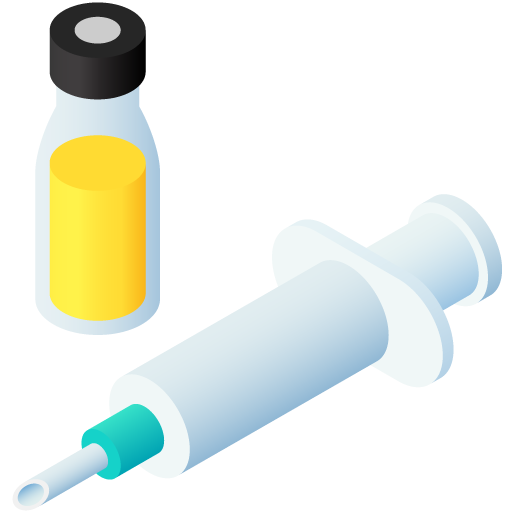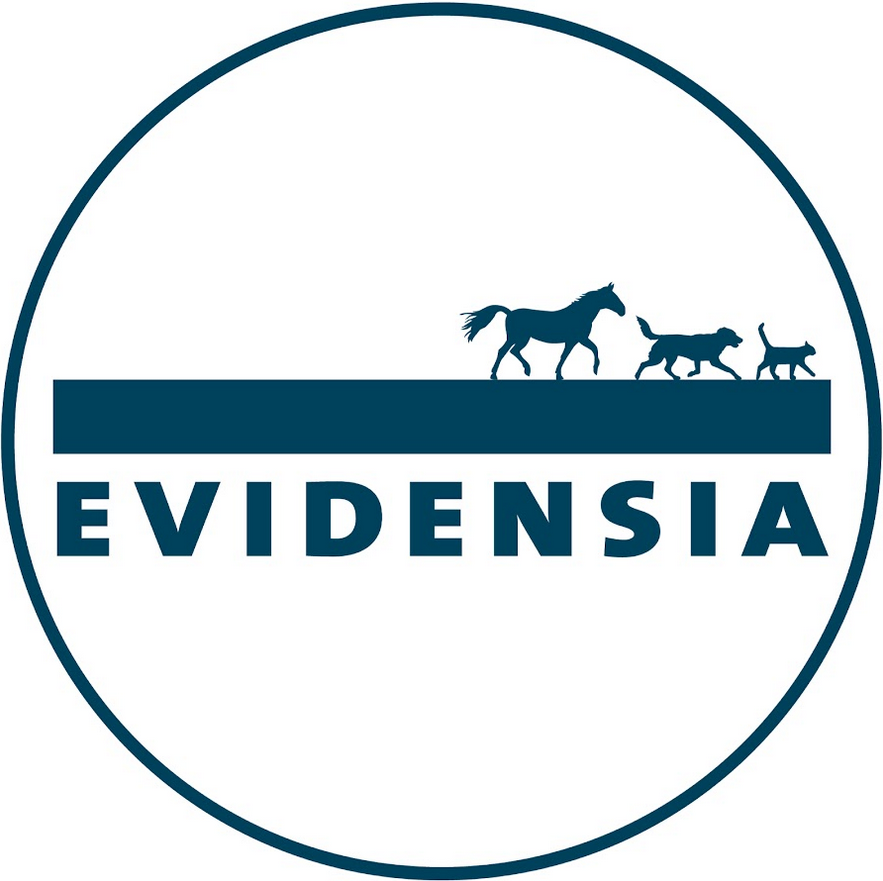Butador
Active substance
ATC code
Species
Horses, dogs, cats
Indications
Horses
As an analgesic
For the short term relief of pain such as colic of gastrointestinal tract origin.
As a sedative and pre-anaesthetic
In combination with α2-adrenoceptor agonists (detomidine, romifidine, xylazine): For therapeutic and diagnostic procedures such as minor standing surgery and sedation of intractable patients.
Dogs, cats
As an analgesic
For relief of moderate visceral pain e.g. pre- and post-surgical as well as post-traumatic pain.
As a sedative
In combination with α2-adrenoceptor agonists (medetomidine).
As a pre-anaesthetic
Part of anaesthetic regime (medetomidine, ketamine).
Dose to be administered and administration route
For intravenous (i.v.), intramuscular (i.m.) or subcutaneous (s.c.) use.
Horses:Intravenous
Dogs: Intravenous, subcutaneous or intramuscular
Cats:Intravenous or subcutaneous
To ensure a correct dosage, body weight should be determined as accurately as possible.
Horses
As an analgesic
Monotherapy:
0.1 mg/kg (1 ml/100 kg bw) i.v.
As a sedative and as a pre-anaesthetic
With detomidine:
Detomidine: 0.012 mg/kg i.v., followed within 5 minutes by
Butorphanol: 0.025 mg/kg (0.25 ml /100 kg bw) i.v.
With romifidine:
Romifidine: 0.05 mg/kg i.v., followed within 5 minutes by
Butorphanol: 0.02 mg/kg (0.2 ml /100 kg bw) i.v..
With xylazine:
Xylazine: 0.5 mg/kg i.v., followed after 3 - 5 minutes by
Butorphanol: 0.05 – 0.1 mg/kg (0.5 - 1 ml /100 kg bw) i.v..
Dogs
As an analgesic
Monotherapy:
0.1 - 0.4 mg/kg (0.01 – 0.04 ml/kg bw) slowly i.v. (in the lower to medium dose range) as well as i.m., s.c..
For post-operative pain control the injection should be administered 15 minutes before the end of anaesthesia in order to achieve sufficient pain relief during the recovery phase.
As a sedative
With medetomidine:
Butorphanol: 0.1 mg/kg (0.01 ml/kg bw) i.v., i.m.
Medetomidine: 0.01 mg/kg i.v., i.m.
As a pre-anaesthetic
With medetomidine and ketamine:
Butorphanol: 0.1 mg/kg (0.01 ml/kg bw) i.m.
Medetomidine: 0.025 mg/kg i.m., followed after 15 minutes by
Ketamine: 5 mg/kg i.m.
It is only possible to use atipamezole 0.1 mg/kg body weight for medetomidineantagonisation when ketamine action has ceased.
Cats
As an analgesic
Monotherapy:
15 minutes prior to recovery either: 0.4 mg/kg (0.04 ml/kg bw) s.c. or: 0.1 mg/kg (0.01 ml/kg bw) i.v.
As a sedative
With medetomidine:
Butorphanol: 0.4 mg/kg (0.04 ml/ kg bw) s.c.
Medetomidine: 0.05 mg/kg s.c.
For wound debridement an additional local anaesthesia is recommended.
Medetomidine-antagonisation is possible with atipamezole 0.125 mg/kg body weight.
As a pre-anaesthetic
With medetomidine and ketamine:
Butorphanol: 0.1 mg/kg (0.01 ml/ kg bw) i.v.
Medetomidine: 0.04 mg/kg i.v. Ketamine: 1.5 mg/kg i.v.
It is only possible to use atipamezole 0.1 mg/kg body weight for medetomidine– antagonisation when ketamine action has ceased.
Butorphanol is intended for use where short (horses and dogs) and short to medium (cats) analgesia is required. The dose may be repeated as required. The need for and timing of repeated treatment will be based on clinical response. For information on the duration of analgesia see section 4.2.
Rapid intravenous injection should be avoided.
The stopper must not be punctured more than 25 times.
Adverse reactions
Horses:
|
Very common (>1 animal / 10 animals treated): |
|
|
Undetermined frequency (cannot be estimated from the available data): |
Involuntary movement[3]; Digestive tract hypomotility[4]; Respiratory depression[5]; Cardiac depression. |
1 Lasting about 3 to 15 minutes.
2 Mild.
3 Running movements.
4 Mild and transient. Any reduction of gastrointestinal motility caused by butorphanol may be enhanced by the concomitant use of α2-agonists.
5 The respiratory depressive effects of α2-agonists may be enhanced by concomitant butorphanol, particularly if respiratory function is already impaired.
Dogs:
|
Rare (1 to 10 animals / 10,000 animals treated): |
Ataxia; Anorexia; Diarrhoea. |
|
Undetermined frequency (cannot be estimated from the available data): |
Respiratory depression; Cardiac depression; Injection site pain1; Digestive tract hypomotility. |
1 Associated with intramuscular administration.
Cats:
|
Rare (1 to 10 animals / 10,000 animals treated): |
Ataxia; Anorexia; Diarrhoea. |
|
Undetermined frequency (cannot be estimated from the available data): |
Respiratory depression; Cardiac depression; Injection site pain1; Digestive tract hypomotility; Excitation, Anxiety; Sedation, Mydriasis, Disorientation; Dysphoria. |
1 Associated with intramuscular administration.
Reporting adverse events is important. It allows continuous safety monitoring of a veterinary medicinal product. Reports should be sent, preferably via a veterinarian, to either the marketing authorisation holder or its local representative or the national competent authority via the national reporting system. See the package leaflet for respective contact details.
Dispensing
POM-V - Prescription Only Medicine – VeterinarianSUMMARY OF PRODUCT CHARACTERISTICS
1. NAME OF THE VETERINARY MEDICINAL PRODUCT
Butador 10 mg/ml solution for injection for horses, dogs and cats
2. QUALITATIVE AND QUANTITATIVE COMPOSITION
1 ml contains:
Active substance:
Butorphanol 10 mg
(as butorphanol tartrate 14.58 mg)
Excipient:
Benzethonium chloride 0.1 mg
For the full list of excipients, see section 6.1.
3. PHARMACEUTICAL FORM
Solution for injection.
Clear, colourless to almost colourless solution.
4. CLINICAL PARTICULARS
4.1 Target species
Horse, dog, cat
4.2 Indications for use, specifying the target species
HORSE
As an analgesic
For the short term relief of pain such as colic of gastrointestinal tract origin.
As a sedative and pre-anaesthetic
In combination with α2-adrenoceptor agonists (detomidine, romifidine, xylazine): For therapeutic and diagnostic procedures such as minor standing surgery and sedation of intractable patients.
DOG/CAT
As an analgesic
For relief of moderate visceral pain e.g. pre- and post-surgical as well as post-traumatic pain.
As a sedative
In combination with α2--adrenoceptor agonists (medetomidine).
As a pre-anaesthetic
Part of anaesthetic regime (medetomidine, ketamine).
4.3 Contraindications
Do not use in cases of hypersensitivity to the active substance or to any of the excipients. Do not use for treatment of animals with severe dysfunction of the liver and kidneys, in case of cerebral injury or organic brain lesions and in animals with obstructive respiratory diseases, heart dysfunctions or spastic conditions.
For combination use with α2--agonists in horses:
Do not use in horses with a pre-existing cardiac dysrhythmia or bradycardia.
The combination will cause a reduction in gastrointestinal motility and consequently should not be used in cases of colic associated with impaction. Do not use combination during pregnancy.
4.4 Special warnings for each target species
The precautionary measures required for contact with animals should be followed and stress factors for the animals should be avoided.
In cats, individual response to butorphanol may be variable. In the absence of an adequate analgesic response, an alternative analgesic agent should be used.
Increasing of the dose may not increase the intensity or duration of analgesia.
4.5 Special precautions for use
Special precautions for use in animals
The safety of the product in puppies, kitten and foals has not been established. Use of the product in these groups should be on the basis of a risk-benefit analysis by the responsible veterinarian.
Due to its antitussive properties, butorphanol may lead to an accumulation of mucous in the respiratory tract. Therefore, in animals with respiratory diseases associated with increased mucous production, butorphanol should only be used after a risk-benefit evaluation by the responsible veterinarian. If respiratory depression occurs, naloxone may be used as an antidote.
Sedation may be noted in treated animals. The combination of butorphanol and α2adrenoceptor agonists should be used with caution in animals with cardiovascular disease. The concurrent use of anticholinergic drugs, e.g atropine should be considered.
Administration of butorphanol and romifidine in one syringe should be avoided due to increased bradycardia, heart block and ataxia.
HORSE
The use of the product at the recommended dose may lead to transient ataxia and/or excitement. Therefore, to prevent injuries in patient and people when treating horses, the location for the treatment should be chosen carefully.
CAT
Cats should be weighed to ensure that the correct dose is calculated. An appropriate graduated syringe must be used to allow accurate administration of the required dose volume (e.g. insulin syringe or 1 ml graduated syringe). If repeated administrations are required, use different injection sites.
Special precautions to be taken by the person administering the veterinary medicinal product to animals
Butorphanol has opioid-like activity. Precautions should be taken to avoid accidental injection/self-injection with this potent drug. The most frequent adverse effects of butorphanol in humans are drowsiness, sweating, nausea, dizziness and vertigo and may occur following unintended self-injection. If accidental self-injection occurs, seek medical advice immediately and show the package leaflet or the label to the physician. Do not drive. An opioid antagonist (e.g.naloxone) may be used as an antidote. Wash splashes from skin and eyes immediately.
4.6 Adverse reactions (frequency and seriousness)
HORSE
Undesirable effects are generally related to the known activity of opioids. In published trials with butorphanol, transient ataxia, lasting about 3 to 15 minutes, occurred in about 20 % of horses. Mild sedation occurred in about 10 % of horses. Increased motor activity (running movements) is possible. Gastrointestinal motility may be reduced. This effect is mild and transient.
For combination use:
Any reduction of gastrointestinal motility caused by butorphanol may be enhanced by the concomitant use of α2--agonists. The respiratory depressive effects of α2-agonists may be enhanced by concomitant butorphanol, particularly if respiratory function is already impaired. Other undesirable effects (e.g.cardiovascular) are likely to be related to the α2--agonist.
DOG/CAT
Depression of the respiratory and cardiovascular system. Local pain associated with intramuscular administration. Decreased gastrointestinal motility. In rare cases, ataxia, anorexia and diarrhoea. In cats excitation or sedation, anxiety, disorientation, dysphoria and mydriasis are possible.
The frequency of adverse reactions is defined using the following convention:
- very common (more than 1 in 10 animals treated displaying adverse reaction(s))
- common (more than 1 but less than 10 animals in 100 animals treated)
- uncommon (more than 1 but less than 10 animals in 1,000 animals treated)
- rare (more than 1 but less than 10 animals in 10,000 animals treated)
- very rare (less than 1 animal in 10,000 animals treated, including isolated reports).
4.7 Use during pregnancy, lactation or lay
Butorphanol crosses the placental barrier and penetrates into milk. Studies in laboratory species have not produced any evidence of teratogenic effects.
The safety of the veterinary medicinal product has not been established in the target species during pregnancy and lactation. The use of butorphanol during pregnancy and lactation is not recommended.
4.8 Interaction with other medicinal products and other forms of interaction
The concomitant administration of other drugs which are metabolised in the liver may enhance the effect of butorphanol.
Butorphanol used with concurrently administered anaesthetics, centrally sedative or respiratory depressive drugs produces additive effects. Any use of butorphanol in this context requires acute control and a careful adaptation of the dose.
Administration of butorphanol may remove the analgesic effect in animals, which have already received pure μ-opioid analgesics.
4.9 Amounts to be administered and administration route
Horse:Intravenous use
Dog: Intravenous, subcutaneous and intramuscular use
Cat: Intravenous and subcutaneous use
HORSE
As an analgesic Monotherapy:
0.1 mg/kg (1 ml/100 kg bw) IV.
As a sedative and as a pre-anaesthetic With detomidine:
Detomidine: 0.012 mg/kg IV, followed within 5 minutes by Butorphanol: 0.025 mg/kg (0.25 ml /100 kg bw) IV.
With romifidine:
Romifidine: 0.05 mg/kg IV, followed within 5 minutes by Butorphanol: 0.02 mg/kg (0.2 ml /100 kg bw) IV.
With xylazine:
Xylazine: 0.5 mg/kg IV, followed after 3 - 5 minutes by Butorphanol: 0.05 – 0.1 mg/kg (0.5 - 1 ml /100 kg bw) IV.
DOG
As an analgesic Monotherapy:
0.1 - 0.4 mg/kg (0.01 – 0.04 ml/kg bw) slowly IV (in the lower to medium dose range) as well as IM, SC.
For post-operative pain control the injection should be administered 15 minutes before the end of anaesthesia in order to achieve sufficient pain relief during the recovery phase.
As a sedative With medetomidine:
Butorphanol: 0.1 mg/kg (0.01 ml/kg bw) IV, IM Medetomidine: 0.01 mg/kg IV, IM.
As a pre-anaesthetic
With medetomidine and ketamine:
Butorphanol: 0.1 mg/kg (0.01 ml/kg bw) IM
Medetomidine: 0.025 mg/kg IM, followed after 15 minutes by Ketamine: 5 mg/kg IM.
It is only possible to use atipamezole 0.1 mg/kg body weight for medetomidineantagonisation when ketamine action has ceased.
CAT
As an analgesic Monotherapy:
15 minutes prior to recovery either: 0.4 mg/kg (0.04 ml/kg bw) SC or: 0.1 mg/kg (0.01 ml/kg bw) IV
As a sedative With medetomidine:
Butorphanol: 0.4 mg/kg (0.04 ml/ kg bw) SC Medetomidine: 0.05 mg/kg SC.
For wound debridement an additional local anaesthesia is recommended.
Medetomidine-antagonisation is possible with atipamezole 0.125 mg/kg body weight.
As a pre-anaesthetic
With medetomidine and ketamine:
Butorphanol: 0.1 mg/kg (0.01 ml/ kg bw) IV
Medetomidine: 0.04 mg/kg IV Ketamine: 1.5 mg/kg IV.
It is only possible to use atipamezole 0.1 mg/kg body weight for medetomidine– antagonisation when ketamine action has ceased.
Butorphanol is intended for use where short (horse and dog) and short to medium (cat) analgesia is required. The dose may be repeated as required. The need for and timing of repeated treatment will be based on clinical response. For information on the duration of analgesia see section 5.1.
Rapid intravenous injection should be avoided.
The stopper must not be punctured more than 25 times.
4.10 Overdose (symptoms, emergency procedures, antidotes), if necessary
HORSE
Increased dosages could result in respiratory depression as a general opioid effect. Intravenous doses of 1.0 mg/kg (10 x the recommended dose), repeated at 4-hourly intervals for 2 days, led to transient adverse effects, including pyrexia, tachypnoea, CNS signs (hyperexcitability, restlessness, mild ataxia leading to somnolence) and gastrointestinal hypomotility, sometimes with abdominal discomfort. An opioid antagonist (e.g. Naloxone) may be used as an antidote.
DOG/CAT
Miosis (dog)/Mydriasis (cat), respiratory depression, hypotension, disorders of the cardiovascular system and in severe cases respiratory inhibition, shock and coma. Depending on the clinical situation counter-measures should be taken under intense medical monitoring. Monitoring is required for a minimum of 24 hours.
4.11 Withdrawal period(s)
Horse
Meat and offal: zero days
Milk: zero hours
5. PHARMACOLOGICAL PROPERTIES
Pharmacotherapeutic group: Morphinan derivatives;
ATC vet code: QN02AF01
5.1 Pharmacodynamic properties
Butorphanol is a centrally acting analgesic from the group of synthetic opioids with an agonistic-antagonistic effect, agonist at the kappa opioid receptor subtype and antagonist at the mu receptor subtype. The kappa receptors control analgesia, sedation without depression of cardiopulmonary system and body temperature, whereas the mu receptors control supraspinal analgesia, sedation and depression of cardiopulmonary system and body temperature.
The agonist component of butorphanol activity is ten times more potent than the antagonist component.
Analgesia generally occurs within 15 minutes following administration in horse, dog and cat. After a single intravenous dose in the horse analgesia usually lasts up to 2 hours. In the dog it lasts up to 30 minutes after a single intravenous administration. In cats with visceral pain analgesic effects have been demonstrated for up to 6 hours. In cats with somatic pain duration of analgesia has been considerably shorter.
Increased doses do not correlate with increased analgesia, a dosage of about 0.4 mg/kg leads to a ceiling effect.
Butorphanol has minimal cardiopulmonary depressant activity in the target species. It does not cause histamine release in horses. In combination with α2-agonists it causes additive and synergistic sedation.
5.2 Pharmacokinetic particulars
Post parenteral administration absorption of the product is rapid and almost complete with serum peak levels occurring after 0.5 - 1.5 hours. It is highly bound to plasma proteins (up to 80 %). Metabolism is rapid and mainly occurs in the liver. Two inactive metabolites are produced. The elimination occurs mainly through urine (to a major extent) and faeces.
HORSE: Volume of distribution is large after IV administration (2.1 l/kg) suggesting wide distribution into tissues. Terminal half life is short: about 44 minutes. 97 % of the dose after IV administration in the horse will be eliminated in less than 5 hours.
DOG: Volume of distribution is large after IV administration (4.4 l/kg) suggesting wide distribution into tissues. Terminal half life is short: about 1.7 hours.
CAT: Volume of distribution is large after IV administration (7.4 l/kg) suggesting wide distribution into tissues. Terminal half life is short: about 4.1 hours.
6. PHARMACEUTICAL PARTICULARS
6.1 List of excipients
- Benzethonium chloride
- Sodium chloride
- Water for injections
6.2 Major incompatibilities
In the absence of compatibility studies, this veterinary medicinal product must not be mixed with other veterinary medicinal products.
6.3 Shelf life
Shelf-life of the veterinary medicinal product as packaged for sale: 3 years
Shelf-life after first opening the immediate packaging: 28 days
6.4 Special precautions for storage
This veterinary medicinal product does not require any special temperature storage conditions.
Keep the vial in the outer carton in order to protect from light.
6.5 Nature and composition of immediate packaging
Clear glass type I vials with bromobutyl rubber stoppers and aluminium caps.
Package sizes: 1 x 10 ml, 5 x 10 ml, 10 x 10 ml, 1 x 50 ml. Not all pack sizes may be marketed.
6.6 Special precautions for the disposal of unused veterinary medicinal product or waste materials derived from the use of such products
Any unused veterinary medicinal product or waste materials derived from such veterinary medicinal product should be disposed of in accordance with local requirements.
7. MARKETING AUTHORISATION HOLDER
VetViva Richter GmbH
Durisolstrasse 14
4600 Wels Austria
8. MARKETING AUTHORISATION NUMBER
Vm 57446/4000
9. DATE OF FIRST AUTHORISATION
17 January 2011
10. DATE OF REVISION OF THE TEXT
January 2023 
Approved: 23 January 2023

| Art. Nr. | 57446/5006 |
|---|
 TRUSTED SOURCE
TRUSTED SOURCE








